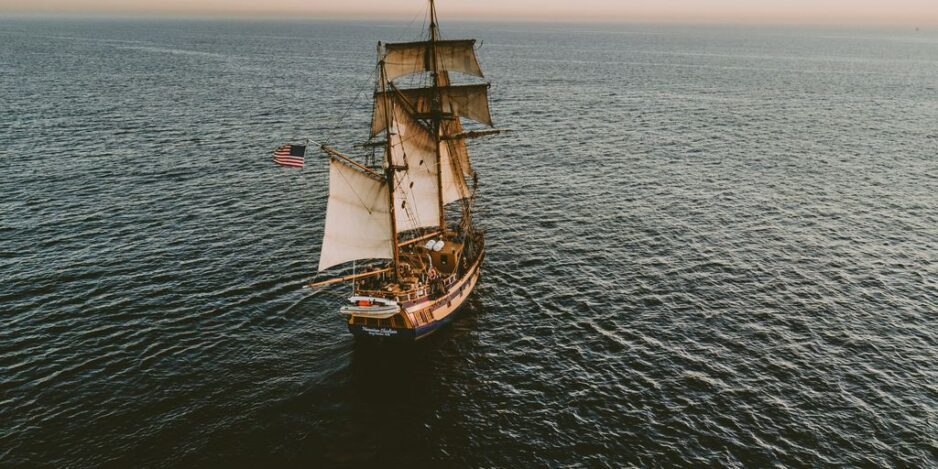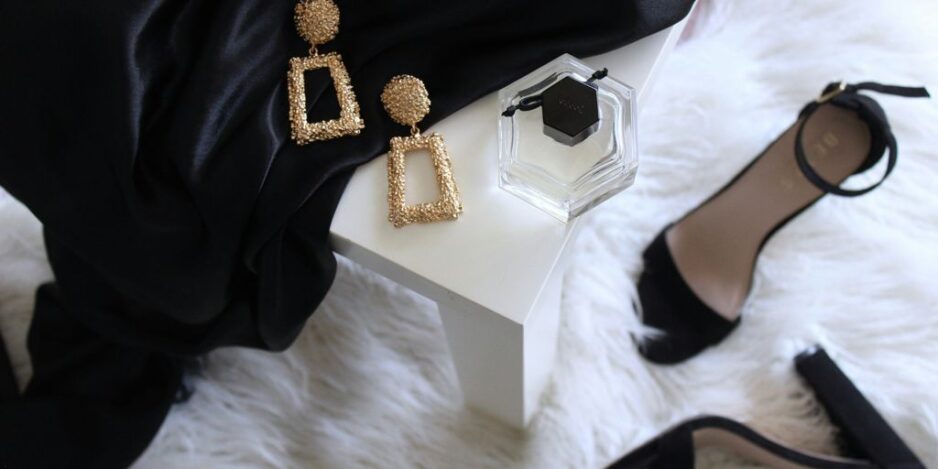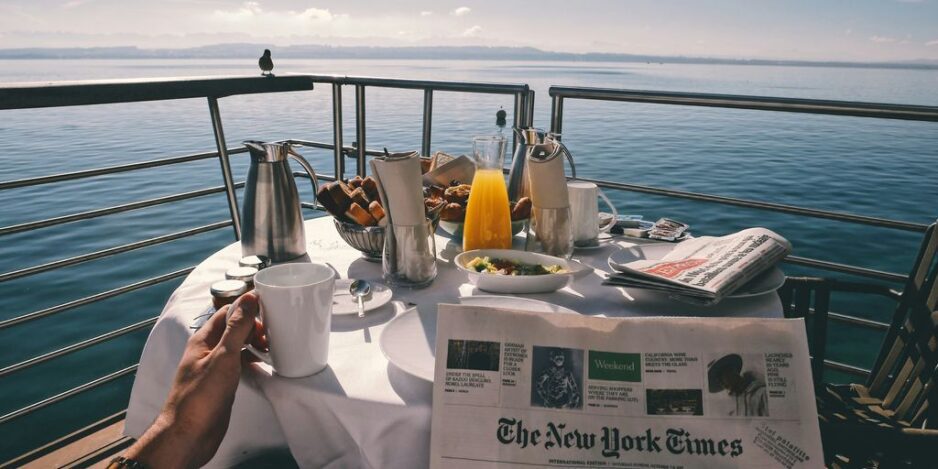Imagine a trip where your cruise ship is not just a way to get around, but also a floating art gallery, full of cool experiences. Paul Gauguin Cruises offers just that, mixing fancy travel with the rich culture of the South Pacific. This isn’t your average cruise; it’s a chance to see beautiful places, learn about local traditions, and enjoy top-notch service, all while surrounded by an artistic vibe. It’s a truly unique way to explore the world.
Key Takeaways
- Paul Gauguin Cruises has a special floating marina that lets you easily get into the water for fun activities.
- The cruise line has cultural guides called Gauguines who share local traditions and lead cool activities.
- You get to stay in really nice rooms and enjoy lots of fancy stuff on the ship.
- Everything from food to activities is included, so you don’t have to worry about extra costs.
- The cruises take you to private, beautiful spots like Motu Mahana, which is their own private island.
The Floating Art Gallery Experience
Exploring the Unique Floating Marina
Okay, so picture this: You’re on a cruise, right? But not just any cruise. This is a Paul Gauguin cruise, and it’s got its own floating marina. I know, sounds kinda wild, but it’s true! This setup lets you get super close to the water and those secluded spots that other ships just can’t reach. It’s like having your own private gateway to paradise. Pretty cool, huh?
How the Onboard Marina Enhances Your Cruise
So, how does this floating marina actually make your cruise better? Well, for starters, it makes getting into the water super easy. No more waiting in line for a tender boat! You can just hop right in for some swimming or snorkeling. Plus, it’s a great spot to just chill and soak up the sun. It really adds a whole new dimension to the cruise experience. The onboard marina activities really make the trip unforgettable.
Diving Made Easy with the Onboard Marina
If you’re into diving, then you’re gonna love this. The onboard marina makes diving so much easier. You can gear up right there and jump straight into the water. No more lugging your equipment around or dealing with crowded dive boats. It’s all right there, ready to go. Plus, the crew can help you with everything, from setting up your gear to finding the best dive spots. It’s a diver’s dream come true. Paul Gauguin Cruises provides unique itineraries for exploring the South Pacific.
Immersive Cultural Journeys
Immersive Polynesian Cultural Activities
Okay, so you’re on a cruise, but this isn’t just any cruise. Paul Gauguin Cruises really tries to get you involved with the local culture. It’s not just about seeing the islands; it’s about experiencing them. They have all sorts of activities, from learning how to dance traditional Polynesian dances to trying your hand at local crafts. It’s a cool way to experience Polynesia firsthand.
- Learn traditional Polynesian dances.
- Try local crafts like lei making.
- Attend storytelling sessions with local elders.
It’s a great way to get a feel for the islands and the people who live there. You’re not just a tourist; you’re a participant.
Who Are the Gauguines: Cultural Ambassadors
So, who are these people leading the activities? They’re called Gauguines, and they’re basically cultural ambassadors. They’re locals who know everything about the islands, and they’re there to share their knowledge with you. They lead tours, teach classes, and generally make sure you have a good time while learning about the culture. They really bring the Polynesian culture to life.
Unique Activities Led by the Gauguines
These aren’t your typical cruise activities. The Gauguines lead some pretty unique stuff. Think cooking classes where you learn to make local dishes, or maybe a snorkeling trip where they point out all the cool marine life and tell you about the local legends associated with them. It’s a step up from the usual cruise fare. It’s all about getting you involved and making sure you have a memorable experience. Here’s a few things you might do:
- Cooking classes featuring local cuisine
- Guided snorkeling tours with cultural insights
- Language lessons to learn basic Polynesian phrases
Luxury Accommodations and Amenities
A Comprehensive Guide to Onboard Amenities
Okay, so you’re thinking about a Paul Gauguin cruise, right? One of the big things that sets it apart is all the stuff they have on board. It’s not just about getting from island to island; it’s about how you live while you’re doing it. Think of it as a floating resort, but way more personal.
- Multiple dining venues, from casual to fancy.
- A spa where you can get pampered.
- Lounges for chilling out with a drink.
Honestly, it’s like they thought of everything. I was never bored, and I always felt like I had options, whether I wanted to be social or just relax by myself. The crew is super attentive, too, which makes a huge difference.
Luxury Accommodations on Paul Gauguin Cruises
Let’s talk about the rooms, because that’s where you’ll be spending a good chunk of your time. The cabins on Paul Gauguin Cruises are designed to be spacious and comfortable. They aren’t your typical cramped cruise ship rooms. Many have ocean views, private balconies, and all the amenities you’d expect from a high-end hotel. It’s like having your own little apartment on the water. You can check out the private retreats available.
The Luxury Amenities That Set Paul Gauguin Cruises Apart
What really makes Paul Gauguin stand out? It’s the little extras. It’s not just about having a nice room or good food; it’s about the whole experience. Think about things like:
- Butler service in some suites.
- Access to a private beach on Motu Mahana.
- High-end toiletries and linens.
It’s these details that make the cruise feel truly luxurious. It’s not just about the big things; it’s about the attention to detail and the feeling that everything is taken care of. It’s a real treat yourself kind of vacation. You can also explore island lodges for more options.
All-Inclusive Cruising Excellence

What’s Included in a Paul Gauguin Cruise: A Complete Guide
So, you’re thinking about a Paul Gauguin cruise? Awesome! One of the best things is how much is included. It really takes the stress out of vacation planning. Basically, you pay one price, and a ton of stuff is covered.
Here’s a quick rundown:
- All your meals (and we’re talking gourmet stuff!).
- Drinks, including alcohol (some premium brands might cost extra).
- Water sports equipment.
- Tips and gratuities.
It’s nice not having to constantly pull out your wallet. You can just relax and enjoy the beautiful scenery without worrying about every little expense. It makes the whole trip feel more luxurious, in my opinion.
For a complete guide, check out their website. You can also find more information about specific inclusions when you book.
Gourmet Dining and Exceptional Service
Okay, let’s talk food. The dining experience on Paul Gauguin Cruises is seriously top-notch. It’s not just about filling your stomach; it’s about enjoying carefully prepared meals with amazing service. The chefs use fresh, local ingredients, and the menus change regularly, so you’re always trying something new.
Here’s a little taste of what to expect:
- Multiple restaurants with different cuisines.
- Open seating, so you can dine when you want.
- Attentive waiters who remember your preferences.
Seamless Travel with Far and Away Adventures
Planning a big trip can be a headache, but Far and Away Adventures can really help. They specialize in Paul Gauguin Cruises, so they know all the ins and outs. They can handle everything from booking your flights to arranging pre- and post-cruise stays. Plus, they can give you insider tips on the best excursions and activities. They really do ensure a seamless cruise experience.
Unforgettable Onboard Experiences
A Closer Look at Onboard Experiences
Cruising with Paul Gauguin isn’t just about seeing amazing places; it’s also about what happens while you’re on the ship. The onboard atmosphere is designed to immerse you in the Polynesian spirit, making your journey as enriching as the destinations themselves. It’s a blend of relaxation, cultural learning, and just plain fun.
- Live music performances featuring local artists
- Lectures on Polynesian history and culture
- Cooking demonstrations showcasing regional cuisine
I remember one evening, sitting on the deck, listening to a local band play traditional songs. The sunset was incredible, and the music just added to the whole experience. It felt like I was truly connecting with the place, not just passing through.
Thrilling Water Sports and Activities
If you’re the type who likes to stay active, Paul Gauguin Cruises has you covered. They offer a range of water sports and activities that let you explore the ocean in exciting ways. From snorkeling to paddleboarding, there’s something for everyone. Plus, the ship’s floating marina makes getting in and out of the water super easy. You can also explore the islands with cultural tours to historical sites.
- Snorkeling gear provided for exploring coral reefs
- Paddleboarding and kayaking available for calm waters
- Scuba diving excursions for certified divers
Relaxation and Exploration at Sea
Sometimes, the best part of a vacation is simply unwinding and enjoying the moment. Paul Gauguin Cruises offers plenty of opportunities for that too. You can lounge by the pool, get a massage at the spa, or just sit on your balcony and watch the ocean go by. And when you’re ready to explore, the ship offers excursions to some of the most beautiful spots in the South Pacific, including a visit to Motu Mahana, their exclusive private islet. It’s the perfect balance of relaxation and adventure, allowing you to discover the South Pacific islands and create lasting memories.
Discovering Secluded South Pacific Gems
Cruising with Paul Gauguin isn’t just about seeing the South Pacific; it’s about experiencing it in a way that few others can. The itineraries are crafted to bring you to places untouched by mass tourism, offering a level of intimacy and exclusivity that’s hard to find elsewhere. It’s about more than just ticking destinations off a list; it’s about creating memories in places that feel like your own secret paradise.
Access to Beautiful and Secluded Spots
Paul Gauguin Cruises specializes in getting you to those hard-to-reach places. Forget crowded beaches and tourist traps. We’re talking about pristine lagoons, hidden coves, and islands where the local culture remains vibrant and unspoiled. The smaller size of the ship allows access to ports that larger vessels simply can’t reach. This means you get to explore places that feel truly undiscovered.
Experience Motu Mahana: Exclusive Private Islet
One of the highlights of a Paul Gauguin cruise is the visit to Motu Mahana. This private islet is reserved exclusively for cruise guests, offering a day of unparalleled relaxation and Polynesian charm. Imagine yourself lounging on white sand beaches, sipping cocktails from a floating bar, and enjoying a delicious barbecue lunch prepared by the crew. It’s like having your own private island for the day!
Unique Itineraries in French Polynesia
Paul Gauguin Cruises offers a variety of South Pacific itineraries designed to showcase the best of French Polynesia. These aren’t your typical cookie-cutter cruises. They’re carefully curated to include a mix of popular destinations and lesser-known gems, ensuring a diverse and enriching experience. Whether you’re interested in exploring volcanic landscapes, snorkeling in crystal-clear waters, or immersing yourself in local culture, there’s an itinerary to suit your interests.
The feeling of stepping onto a secluded beach, knowing that few others have had the same opportunity, is something truly special. It’s a reminder of the beauty and tranquility that still exists in the world, and it’s an experience that stays with you long after the cruise is over.
Art and Culture Afloat
The Artistic Inspiration of Paul Gauguin
Paul Gauguin Cruises really leans into its namesake, and it’s not just a name. The whole vibe of the ship is designed to reflect Gauguin’s art and his fascination with Polynesian culture. You’ll see prints of his paintings all over the place, and the decor tries to capture that same exotic, colorful feel. It’s kind of like being in a floating art gallery, which is pretty cool if you’re into that sort of thing. The cruise line aims to experience Polynesia in a way that honors Gauguin’s vision.
Connecting with Local Traditions
One of the best parts about these cruises is how they try to connect you with the local culture. It’s not just about seeing pretty beaches; they want you to actually experience Polynesian traditions. They bring local musicians and dancers onboard, and they even have cultural experts who can teach you about the history and customs of the islands. It’s a lot more engaging than just reading about it in a guidebook. Plus, you get to support the local communities by participating in these activities. It’s a win-win. The Gauguines enrich the cruise experience with Polynesian culture.
A Floating Art Gallery of Experiences
It’s more than just paintings on the wall. The whole cruise is designed to be an artistic experience. From the food to the entertainment, everything is carefully curated to create a sense of beauty and wonder. They even have special events and workshops where you can learn about Polynesian art and crafts. It’s like they’re trying to create a total sensory experience that immerses you in the culture. It’s a pretty unique way to travel, and it definitely makes the cruise feel more special than your average vacation.
Honestly, I never thought I’d be into art cruises, but this one actually changed my mind. It’s not stuffy or pretentious; it’s just a really fun way to learn about a different culture. Plus, the scenery is amazing, so you can’t really go wrong.
Sustainability and Responsible Tourism
Paul Gauguin Cruises’ Commitment to Sustainability
Paul Gauguin Cruises is really trying to make a difference. They’re not just sailing through the South Pacific; they’re actively working to protect it. Their commitment to sustainability is evident in various initiatives aimed at minimizing their environmental footprint. It’s cool to see a cruise line taking this seriously, from waste management to supporting local conservation efforts. They’re trying to ensure that future generations can enjoy the same beautiful destinations we do today. It’s not just about luxury; it’s about responsibility.
Preserving the Beauty of the South Pacific
Keeping the South Pacific beautiful is a big deal, and Paul Gauguin Cruises seems to get that. They’re putting effort into preserving the natural wonders of the region. This includes:
- Supporting marine life protection programs.
- Partnering with local communities on conservation projects.
- Implementing practices to reduce pollution.
It’s more than just a cruise; it’s about protecting the environment for the long haul. They’re trying to make sure that the impact they have is a positive one, leaving the islands as pristine as possible.
Eco-Conscious Exploration
Exploring the South Pacific in an eco-friendly way is totally possible, and Paul Gauguin Cruises is trying to show how. They’re focusing on sustainable tourism practices that allow passengers to enjoy the beauty of the islands without harming them. It’s about finding that balance between adventure and responsibility. You can relax knowing that your vacation isn’t costing the earth. Plus, they work with eco-friendly resorts to make sure the whole trip is green. And if you want to book your trip with Far and Away Adventures, you can be sure they are also committed to sustainability.
Tailored Adventures for Every Traveler
Personalized Service and Attention
Okay, so, what really makes a trip special? It’s when you feel like someone actually cares about making it amazing for you. That’s what Paul Gauguin Cruises tries to do. They get that everyone’s different, and they try to make sure you feel seen and taken care of. It’s not just about going somewhere; it’s about how you experience it.
Creating Lasting Memories
Cruises are cool, but what if you could, like, really remember it? Paul Gauguin Cruises wants to help you do that. It’s not just about seeing pretty places (though, yeah, there are a lot of those). It’s about doing stuff that sticks with you. Think about it:
- Learning to dance Polynesian style.
- Snorkeling in water so clear it looks fake.
- Eating food you can’t even pronounce but tastes incredible.
It’s about those little moments that, when you look back, make you smile and say, "Wow, that was awesome." They want you to have stories to tell, not just photos to show.
A Top Choice for Relaxation and Adventure
So, you’re trying to pick a vacation, huh? Do you want to chill on a beach, or go explore some crazy cool islands? What if you could do both? Paul Gauguin Cruises tries to be that sweet spot. You can totally relax, get pampered, and soak up the sun. But you can also go on adventures, see new things, and learn about different cultures. It’s like, adventure travel without having to rough it. Plus, you get to see some amazing luxury accommodations and maybe even use a Multi-Island Air Pass to see even more!
We make sure every trip fits you perfectly. No matter what you like, we have an adventure just for you. Find your next amazing journey by visiting our website today!
Wrapping It Up
So, that’s the deal with Paul Gauguin Cruises and their cool art gallery at sea. It’s not just about seeing pretty pictures; it’s about getting a feel for the place, you know? Like, you’re sailing through these amazing islands, and then you see art that’s actually from there. It just makes the whole trip feel more real, more connected. It’s a pretty neat idea, mixing travel with a bit of culture. Definitely something different to think about if you’re planning a trip.
Frequently Asked Questions
What’s so special about the floating marina on Paul Gauguin Cruises?
Paul Gauguin Cruises offers a special floating dock that lets you easily get into the water for fun activities like swimming and diving. It’s like having your own private beach right from the ship, making it super easy to enjoy the ocean.
Who are the Gauguines and what do they do?
The Gauguines are local experts who join the cruises to share their culture with guests. They lead fun activities, teach about local traditions, and help you connect with the South Pacific in a real way.
Are the rooms on Paul Gauguin Cruises really luxurious?
Yes, Paul Gauguin Cruises are known for their fancy rooms and great services. You can expect comfy beds, beautiful views, and everything you need to feel pampered while you explore.
What things are included in a Paul Gauguin Cruise?
These cruises include almost everything! Your meals, drinks, and many activities are covered. This means you can relax and enjoy your trip without worrying about extra costs.
What kinds of activities can I do on a Paul Gauguin Cruise?
You can do lots of exciting things like water sports right from the ship’s marina, enjoy relaxing spa treatments, and learn about the local culture through special events and talks.
Do these cruises visit unique places?
Paul Gauguin Cruises can take you to hidden, beautiful spots in the South Pacific that other ships can’t reach. They also have a private island called Motu Mahana where you can have a special beach day.
How does art and culture fit into the cruise experience?
The cruises are inspired by the artist Paul Gauguin and aim to show you the art and culture of the South Pacific. It’s like a moving art show where you learn about local traditions and beauty.
Is Paul Gauguin Cruises good for the environment?
Paul Gauguin Cruises cares about protecting the beautiful places they visit. They work hard to be eco-friendly and make sure their trips don’t harm the environment, helping keep the South Pacific lovely for everyone.





















